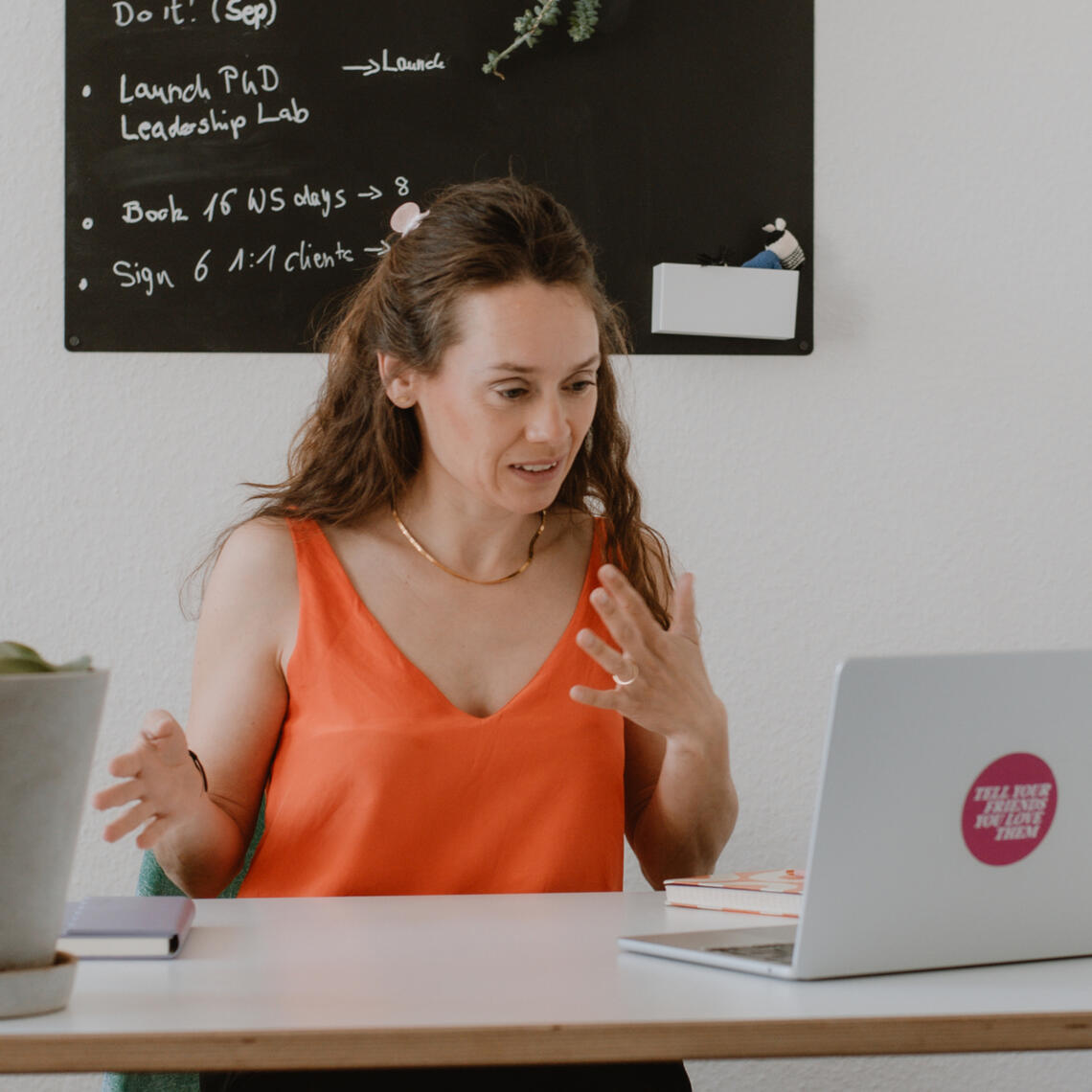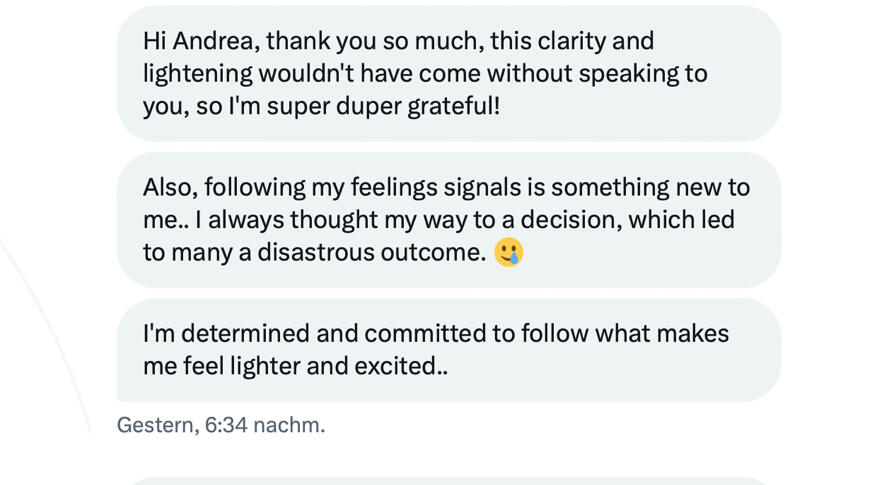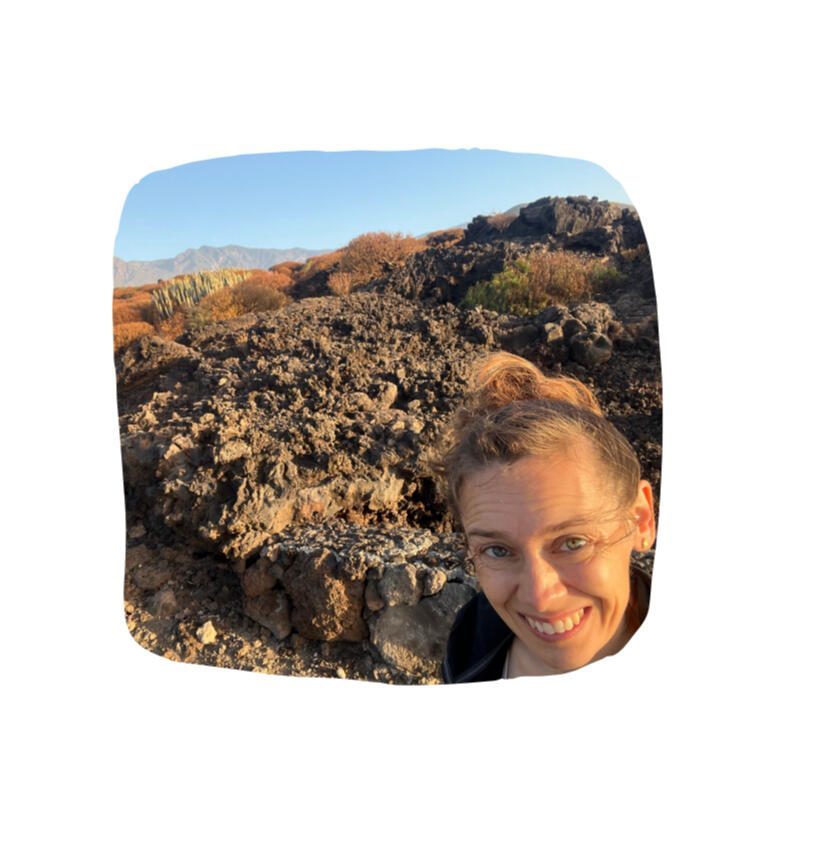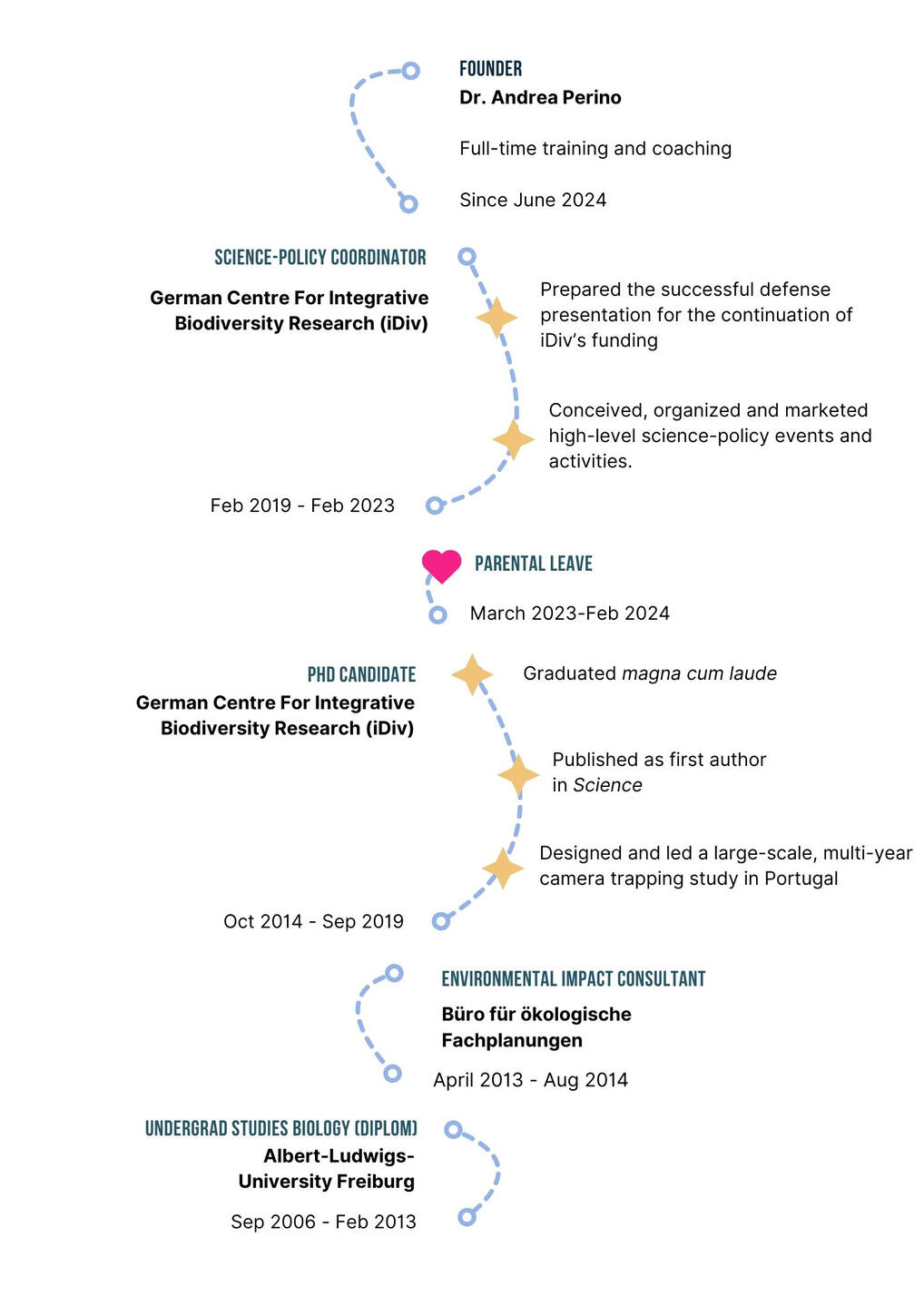Radically positive PhD support
Turn your PhD struggles into sustainable success
Expert Coaching | Training for PhD Success | Career Clarity
Featured in


The three secrets of PhD Success
Create a Phd that fits your lifestyle and helps you build your dream career with our personalized programs!
Doing a PhD isn't rocket science. To finish it with ease and success you just need these three things :
A goal - so you know where you're going.
A plan - to accelerate your progress without exhausting yourself.
A support system - people who stick with you when things get tough and who cheer for you when you succeed.
No matter what it is that you need most - we've got you covered with our programs!
Offers
Coaching

You want to succeed in your PhD but not sacrifice your health and happiness for it?
You want your PhD to be more than just a title - but you haven't figured out what "more" means for you and how to get it?
You're ready for the next step - but can't get yourself to write up and finish the thesis?
I got you!
I've been lost, overwhelmed and stuck in my PhD, too.
But then I figured out how to balance life and ambition - and finished my PhD in 4 years, with a first-author paper in Science and my dream job in my pocket.In my 1:1 coaching, I share all my strategies and tactics with you.So you, too, can thrive in your PhD and start building towards the career of your dreams.
Workshops and Trainings

For the PhD students of today it is no longer sufficient to be a great scientist.
they need to be excellent project managers, science communicators, and leaders, too.
After 10 years as researcher, policy expert, consultant and founder, I know what skills are needed to design and lead a successful project, and to create results that make an impactIt is my mission to equip young scientists with those skills and to empower them to create and share research to advance science, create solutions for pressing societal problems, and boost their individual careers.
Short communications

Some issues don't require an entire coaching program. One conversation can be enough to get you unstuck.That's where my coaching short comms come in:
Get the map: You want to submit a paper, a proposal or even your thesis but lack a clear action plan? Using the framework that helped me finish my PhD fast, without stress, and with a paper published in Science we will set up your personal roadmap to reach any milestone.
Oh my, PI: Your PI keeps dropping tasks on you that keep you from working on your priorities? They are micro-managing or never available? Together, we develop a strategy to get your PI to give you the support you need and frame it into a pitch they cannot resist.
Should I stay or should I go? Thinking about quitting the PhD? I've been there! Not an easy decision but it becomes lighter if you have some clarity about where you wanna go in life and your career - let's analyze your situation and come up with the next step that is best for YOU!
Writer's block buster: Need to write a draft but don't know where or how to start? I got you! With my step-by-step guidance you'll go from messy notes to a structured outline that will make the writing easy (and better ;)).
Client love

"Andrea's support gave me the motivation and accountability that I was missing from my supervision.
During the coaching, I finally developed a clear roadmap for my dissertation. Mapping out all the steps I needed to take until submission allowed me to see my progress and focus on moving forward. The regular meetings helped me stay on track instead of getting stuck in planning and uncertainty.At first, I was skeptical about whether the investment would be worth it - but now, I’m so glad I did it!Without Andrea, I would definitely still be far behind. Her coaching helped me channel my efforts into finishing my thesis, and even now, I can use the structure we created to guide me through the final stretch. I highly recommend working with her to anyone who wants to complete their PhD with clarity and focus!""Nilesh, PhD researcher in Psychology

“Andrea helped me find the courage to make a life changing decision that I was too scared to make and, therefore, was comfortably thinking about it as something my future self would deal with. Andrea doesn’t ask a lot of questions, but she asks the right ones.For me, it only took one to give me the courage to immediately chase the life I wanted: why not now?And for that, I’m truly grateful.”Isabel, CTO, PhD in Ecology

"I thought my situation might be too convoluted to benefit from coaching, but Andrea quickly and sharply grasped my situation and guided me toward clarity that I couldn’t attain when I was spinning my wheels on my own.I felt safe to explore and follow my internal signals in her gentle and compassionate presence."Bora, PhD researcher, Neuroscience


Coaching
I offer personal support to female early career scientists who want it all:
Success without burnout
Recognition and visibility for your accomplishments
A great career in academia or beyond
A life on your terms - with enough time and space for all the things that are important to you.
Programs
The Signature Program
Ph***ing Do it!
90-day PhD finisher's challenge
Struggling to finish your PhD?
This challenge and group coaching program is what you've been missing!
Create your step-by-step roadmap to submission
Solve bottlenecks in weekly group coaching sessions
Team up with other motivated PhD finishers and do the final sprint together
The successful start kit
Become the CEO of your PhD
Lead your PhD with confidence and poise.Six 1:1 coaching calls and hands-on exercises to help you take control over your PhD from day 1 - rather than leaving your career up to your PI.
The premium treatment
The effortless PhD
PhD, but make it easy.In ten 1:1 coaching sessions, you will get clear about your goals, realize what's possible for you and take the necessary steps to shape your PhD so it aligns with the life you want to live TODAY while becoming a step stone towards the career of your dreams.Successfully and effortlessly.
See for yourself!
Not sure if coaching is for you? Let's find out! Book your free 20 minute discovery call!
In-house workshops
I offer workshops for universities and graduate schools to support PhD researchers at every step of their journey.Whether they just started their PhD or are about to submit the thesis, whether they want to succeed in their academic career or thrive in industry - I have the right course for them.
I currently offer workshops on the following topics:
Time- and self-management for PhDs
Preparing effective presentations and posters
Scientific writing
Communication at the Science-Policy interface
How to create impact with your research
Networking for early career researchers
Getting started on LinkedIn

For more info please visit workshops.andreaperino.com or reach out to me via the contact form.
Get in Touch!
Have a question? Send us a message!
Lost in the PhD madness? Find your focus and get back on track - in five days.
A mini-course for PhDs who want to reach their goals with clarity and strategy - without adding more work
You know exactly that you're smart. But for some reason, you're stuck.You're mind is going back and forth between "I don't know what I should be doing" and "I'm putting in the work but I can't see progress - so obviously, I'm doing something wrong!"So, you
• get lost in tasks that don't get you closer to your goals
• can't see how far you've already come
• feel like you've lost control over your project
• can't find joy and motivation in your everyday work.
I got you!
The mini-course "From focus to clarity" helps you in 5 clear steps to
Rediscover your focus
Strategically decide your next steps
Go from feeling overwhelmed to being in the driver's seat
Target your energy to the right things, instead of trying to do everything.
Who is this for?
This course is for you if you...
are stuck in the messy middle of your PhD
regularly catch yourself thinking "I should do XYZ"
feel like you have to do everything at once
finally want to know what is the next most important thing
What's in it for you?
5 no-fluff, actionable modules (total of 2-3 hours of video lessons + PDF-Workbook)
Reflection questions, mini-challenges, strategic frameworks
IMPACT-Canvas to nail your focus and priorities
Bonus: Live-workshop „Plan your next 30 days“
All materials available for 6 months after purchase
What others say about the course
"Finally I know how to distinguish between essentials and the nice-to-have's!"
- Annika, Ecology, 1st year"The roadmap helped me in seeing how much ground I had already covered and what is still left to do.“
- Nilesh, Psychology, final year"It allowed me to reconnect with my work and regain motivation!"
- anonymous feedback
Limited time offer! Save your spot now at only 29 €
This is an early-bird offer that will go away soon. After that the price for this course will go up to 59 €
Frequently asked questions
What's the story behind the name WiSible?
It's no secret that despite all the efforts towards equality and all the small and big wins, we - women in general and women in science in particular - are still facing obstacles and hurdles that make it way harder for us to succeed than it is for (white, cis-) men. And the system that maintains all these inequalities isn't gonna change anytime soon.So, if we want to thrive, we have to find our own way through it.One that focuses on collaboration rather than competition.
Mindfulness rather than hustle culture.
Balance rather than burnout.With WiSible I want to empower women to find their way to success, in academia and beyond.Because we have a right to be here, we have a right to succeed, we have a right to be seen, and we have a right to thrive as scientists and humans.
Are you only helping women?
Generally, my programs are open for anyone who feels they will benefit from my experience and my style of coaching and teaching. Courses I teach at universities and research institutes are of course open to all genders.
That said, the programs I design for WISible are made for women.
With their struggles, their realities of having to juggle many responsibilities and their unique strengths.
I want women in science to thrive, I want us to be visible, and I want us to support each other. And I want WISible to be the go-to place for women to get what they need to reach their dreams.
What exactly happens in the courses?
I'll give you a typical scientist's answer: It depends.The cohort courses address the needs of PhD candidates at different points in their journey."Become the CEO of your PhD" is for graduate students who are still at the beginning of their PhD and who want to make sure they set up the project so it brings them closer to their future career goals. To make sure that happens, we cover topics such as project management, goal setting, negotiation tactics (so you can convince your supervisor to let you do the things you want to do), habits for success, mindfulness and sustainability, and strategic networking."Ph*ing Do it!" is all about finishing the PhD. It’s a 90-day challenge that you do together with other PhD candidates with the aim to submit the thesis by the end of the program. Here, we have an intensive kick-off week with calls and exercises where everyone works out their personal finisher’s roadmap. After that, we get on weekly calls where we celebrate successes and solve issues that came up along the way. It’s a mix of hands-on course, group coaching, and peer support. Individual coaching is also available for issues that can’t be solved in the group setting
The courses are a mix of theoretical input and interactive exercises during and between live calls. Every now and then there will be live hot seat coaching for some of you and there will always be room to exchange with your fellow participants.
For every course you will be assigned a buddy or a support group. The women you are connected with are your accountability partners, rooting for you and making sure you stay on track.
Most people will thrive with the resources and support provided in the group programs. But sometimes, you may run into issues that cannot be solved in the group. For those cases I reserve a limited number of slots for individual coaching.
How does PhD coaching work?
A colleague, psychiatrist and coach at Harvard Medical School once put it like this:“In psychotherapy, you follow the path of your tears. In coaching, you follow the path of your dreams”.That sums it up pretty well. Coaching is a future-oriented approach. It helps you pave the way forward and strengthens and supports you in achieving their goals.Importantly, in our 1:1 coaching relationship you are the boss. You bring the agenda and I follow your lead and support you to find solutions to your problems. I suggest a program as orientation but we can go off-script any time.
I’m interested in joining one of your programs but I can’t afford them. What can I do?
I get it.
Getting personal PhD support is not a small investment and it can feel crazy or impossible to spend so much money on coaching or a targeted course.But, I want you to consider this: Every month that you submit the PhD sooner, is a month where you will potentially earn more than you do now. Do the maths: How long would it take you to work in your dream job post graduation before the investment pays off? Probably it’s not that long.If you still feel, you cannot afford to work with me, please do have a close look at all the options I offer. If 1:1 coaching is not affordable for you right now, I’m convinced you’d still benefit a lot from one of the courses, and those are much more affordable. Plus, you get the added value of working in a peer group and connecting to likeminded PhDs.If you still feel, the investment is too big, get in touch with me. We can arrange monthly installments, we can discuss discounts if you convince a friend to join the course, too, and maybe there’s even the option that your university sponsors your participation. Let’s talk about it!
1 on 1 coaching
The effortless PhD
10 1:1 coaching sessions with full focus on creating your dream PhD.
You choose: Get my support for five months (2 sessions/month) or in weekly sessions.
Your investment: 2.500 €
About Me

You know what you want in life.
A career that excites you and aligns with your values.
Enough time for your friends, family and yourself.
Success.And sometimes you wonder how doing a PhD fits into that. It just feels like the opposite of what you want so often!I know. I've been there.
I started my PhD even though I knew I didn't want to be a scientist. I'd much rather become a science journalist but unfortunately, all my applications were rejected. So I thought to myself if I can't have what I want I'll do this PhD. At least I'll get to write and do fieldwork in a nice sunny place, and I'll be free in organizing my daily work.So I thought.But turns out, Portugal isn't that sunny, my writing often stalled because I didn't get feedback from my advisor or my co-authors, work hours were long and my paper got desk rejected.
Instead of feeling relaxed, in charge and successful, I was stressed and frustrated pretty often. And worst of all, I didn't know WHY I was doing all that to myself. I didn't have a vision for my life after the PhD (I still didn't want to be a scientist) and my motivation hit rock bottom.Then, I found this job I really, really wanted. But, to be qualified, I needed a PhD.
6 months later I had
• the job
• my first chapter published in Science
• submitted my dissertationAll while being in a relationship, hanging out with friends, taking my pony on rides and going on four-week holidays every year.
How did I do that?
• I found my "why"
• I created an efficient system to manage my project
• I asked for supportI believe with all my heart that if you have these three things you can succeed in anything you put your mind to.

That's why I created WiSible
To walk with you on your path to the career of your dreams.Whatever that may mean for you.
Imprint and Data Protection
Dr. Andrea Perino
Zschochersche Str. 10
04177 Leipzig
+49 (0)176/57852714
hello@andreaperino.com
USt-IdNr.: DE369166759
Haftung für Inhalte
Als Diensteanbieter sind wir gemäß § 7 Abs.1 DDG für eigene Inhalte auf diesen Seiten nach den allgemeinen Gesetzen verantwortlich. Wir als Diensteanbieter sind jedoch nicht verpflichtet, übermittelte oder gespeicherte fremde Informationen zu überwachen oder nach Umständen zu forschen, die auf eine rechtswidrige Tätigkeit hinweisen. Verpflichtungen zur Entfernung oder Sperrung der Nutzung von Informationen nach den allgemeinen Gesetzen bleiben hiervon unberührt. Eine diesbezügliche Haftung ist jedoch erst ab dem Zeitpunkt der Kenntnis einer konkreten Rechtsverletzung möglich. Bei Bekanntwerden von entsprechenden Rechtsverletzungen werden wir diese Inhalte umgehend entfernen.
Haftung für Links
Unser Angebot enthält Links zu externen Webseiten Dritter, auf deren Inhalte wir keinen Einfluss haben. Deshalb können wir für diese fremden Inhalte auch keine Gewähr übernehmen. Für die Inhalte der verlinkten Seiten ist stets der jeweilige Anbieter oder Betreiber der Seiten verantwortlich. Die verlinkten Seiten wurden zum Zeitpunkt der Verlinkung auf mögliche Rechtsverstöße überprüft. Rechtswidrige Inhalte waren zum Zeitpunkt der Verlinkung nicht erkennbar. Eine permanente inhaltliche Kontrolle der verlinkten Seiten ist jedoch ohne konkrete Anhaltspunkte einer Rechtsverletzung nicht zumutbar. Bei Bekanntwerden von Rechtsverletzungen werden wir derartige Links umgehend entfernen.DatenschutzDatenerhebung und -verwendung personenbezogener Daten
Unsere Webserver speichern temporär jeden Zugriff in einer Protokolldatei. Folgende Daten werden erfasst und bis zur automatisierten Löschung gespeichert:
IP-Adresse des anfragenden Rechners, Datum und Uhrzeit des Zugriffs, Name und URL der abgerufenen Daten, Übertragene Datenmenge, Meldung, ob der Abruf erfolgreich war, Erkennungsdaten des verwendeten Browser- und Betriebssystems, Webseite, von der aus der Zugriff erfolgt sowie Name Ihres Internet-Zugangs-Providers.
Die Verarbeitung dieser Daten erfolgt zum Zweck, die Nutzung der Webseite zu ermöglichen (Verbindungsaufbau), der Systemsicherheit sowie der technischen Administration der Netzinfrastruktur.
Weitere als die obenstehend aufgezählten personenbezogenen Daten werden nur erhoben, wenn Sie uns diese von sich aus mitteilen. Diese Daten werden in verschlüsselter Form übertragen. Personenbezogene Daten werden ausschließlich zur Bearbeitung Ihrer Anfragen genutzt. Ebenso erfolgt eine Weitergabe der Daten an Dritte ausschließlich zu diesem Zweck. Eine sonstige Weitergabe oder ein Verkauf der personenbezogenen Daten findet nicht statt.
Verwendung von CookiesIn einigen Bereichen unserer Webseiten setzen wir sogenannte Cookies ein. Sie dienen dazu, unser Angebot nutzerfreundlicher zu machen. Cookies sind kleine Textdateien, die auf Ihrem Rechner abgelegt werden und die Ihr Browser speichert. Die meisten der von uns verwendeten Cookies sind so genannte „Session-Cookies“.
Sie werden nach Ende Ihres Besuchs automatisch gelöscht. Sofern Sie über den Einsatz von Cookies seitens Ihres Browsers informiert werden möchten bzw. ihn ausschließen wollen, sollten Sie die entsprechenden Browser-Einstellungen aktivieren.
Nutzung des Webanalysedienstes „Google Analytics“Diese Website benutzt Google Analytics, einen Webanalysedienst der Google Inc. („Google“). Google Analytics verwendet sog. „Cookies“, Textdateien, die auf Ihrem Computer gespeichert werden und die eine Analyse der Benutzung der Website durch Sie ermöglichen. Die durch das Cookie erzeugten Informationen über Ihre Benutzung dieser Website werden in der Regel an einen Server von Google in den USA übertragen und dort gespeichert. Im Falle der Aktivierung der IP-Anonymisierung auf dieser Website, wird Ihre IP-Adresse von Google jedoch innerhalb von Mitgliedstaaten der Europäischen Union oder in anderen Vertragsstaaten des Abkommens über den Europäischen Wirtschaftsraum zuvor gekürzt. Nur in Ausnahmefällen wird die volle IP-Adresse an einen Server von Google in den USA übertragen und dort gekürzt. Im Auftrag des Betreibers dieser Website wird Google diese Informationen benutzen, um Ihre Nutzung der Website auszuwerten, um Reports über die Websiteaktivitäten zusammenzustellen und um weitere mit der Websitenutzung und der Internetnutzung verbundene Dienstleistungen gegenüber dem Websitebetreiber zu erbringen. Die im Rahmen von Google Analytics von Ihrem Browser übermittelte IP-Adresse wird nicht mit anderen Daten von Google zusammengeführt. Sie können die Speicherung der Cookies durch eine entsprechende Einstellung Ihrer Browser-Software verhindern; wir weisen Sie jedoch darauf hin, dass Sie in diesem Fall gegebenenfalls nicht sämtliche Funktionen dieser Website vollumfänglich werden nutzen können. Sie können darüber hinaus die Erfassung der durch das Cookie erzeugten und auf Ihre Nutzung der Website bezogenen Daten (inkl. Ihrer IP-Adresse) an Google sowie die Verarbeitung dieser Daten durch Google verhindern, indem Sie das unter dem folgenden Link (http://tools.google.com/dlpage/gaoptout?hl=de) verfügbare Browser-Plugin herunterladen und installieren. Sie können die Erfassung durch Google Analytics verhindern, indem Sie auf folgenden Link klicken. Es wird ein Opt-Out-Cookie gesetzt, das die zukünftige Erfassung Ihrer Daten beim Besuch dieser Website verhindert.
Nähere Informationen zu Nutzungsbedingungen und Datenschutz finden Sie unter http://www.google.com/analytics/terms/de.html bzw. unter https://www.google.de/intl/de/policies/. Wir weisen Sie darauf hin, dass auf dieser Website Google Analytics um den Code „gat._anonymizeIp();“ erweitert wurde, um eine anonymisierte Erfassung von IP-Adressen (sog. IP-Masking) zu gewährleisten.
Allgemeine Geschäftsbedingungen
English version below.
In the event of a dispute, the German version applies exclusively. The translation is used only for our customers to understand.
Book your 60 minute 1:1 coaching call
Upon clicking the link, you will be redirected to the Stripe website where you can do the booking. As soon as I receive your booking I will reach out with suggestions for call dates.










